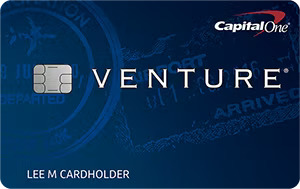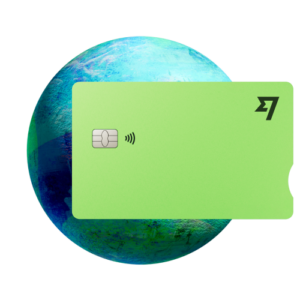Best Ways to Take Money to Italy in 2025
Italy has it all: vibrant culture, world class cuisine, gorgeous climate - and plenty to do, whether you’re looking for a quiet getaway or an adventure packed break. Whatever takes you to Italy, don’t leave without thinking about how to arrange your travel money. A little advance planning can mean you end up with more euros in your pocket in the end.
Read on as we explore 4 possible ways to take money to Italy, including their benefits and drawbacks, to help you pick the right way for you.
Best ways to take money to Italy
In this guide we’ll walk through 4 of the most practical and popular ways to take money to Italy, including our top picks for providers to look at, pros and cons. Here are the common ways to pay overseas that we’ll investigate:
Prepaid travel cards to use in Italy
Ideal for: secure ways to spend and make ATM withdrawals in Italy, with smart apps to manage your money with just your phone
Prepaid travel cards are usually linked to a digital account you can top up by card or with a bank transfer in USD, before switching over to EUR for your trip to see your travel budget easily. Some cards also let you leave your money in dollars, and automatically convert at the point of payment, with no extra foreign transaction fees to pay.
Most prepaid travel cards support a selection of major currencies as well as EUR, so you can simply hold on to your card once you're back from Italy, to top up and use on your next foreign trip. If you plan on doing this, it’s also worth looking for a card with no inactivity fee and no ongoing charges, so you can just pop it in your pocket whenever you’re headed overseas, with no maintenance costs to worry about.
Wise - good value prepaid travel card
With this card:
- Hold and exchange 40+ currencies in your linked Wise account
- No annual or monthly fees to pay, and no minimum balance requirement
- Currency exchange uses the mid-market rate with no markup
- Convenient withdrawals overseas with low fees
- Receive payments to your Wise account in multiple currencies conveniently
| Wise Multi-Currency Card pros | Wise Multi-Currency Card cons |
|---|---|
| ✅ Currency exchange uses the mid-market rate ✅ No foreign transaction fees apply ✅ Free to spend any currency you hold in your account, conversion fees from 0.43% if you need to exchange from one currency to another ✅ Receive payments to your Wise account in a selection of global currencies ✅ No minimum balance or ongoing fees | ❌ 9 USD fee to get a card in the first place ❌ ATM withdrawals with no Wise fees are limited to 2 per month, or up to the total value of 100 USD. Fees of 2% + 1.5 USD after that ❌ No branch network or face to face service |
Pros and cons of taking money to Italy with a prepaid travel card
- Convenient for both spending and cash withdrawals
- Euros are supported by pretty much all US prepaid travel cards
- Secure as not linked to your everyday USD account
- Cards are often available with no ongoing fees to pay
- Currency exchange may have better rates than a bank will offer
- ATM fees may apply, depending on the card you pick
- Some transaction fees usually apply
- Some cards charge a fee if you spend in an unsupported currency, or if you spend a currency you don’t hold in your account already
Travel debit cards to use in Italy
Ideal for: cheap ways to spend and make withdrawals in Italy, with no interest and no penalty fees to worry about
Travel debit cards are often available from specialist online services, and allow you to top up a balance in a linked account, to spend and withdraw in EUR and a selection of other foreign currencies conveniently. Different cards have their own features, often including extra travel perks and benefits. Plus, because they’re debit cards not credit cards, there are no restrictive eligibility requirements, and there’s no chance of accidentally overspending and blowing your budget.
As with prepaid cards, you’ll often find that travel debit cards are linked to a multi-currency account you can use to hold euros ready for your trip. Again, picking a card which supports a broad range of currencies will also mean you can use it for the next time you go away, too.
We’ll go into more detail about our top pick for a travel debit card - Revolut - next.
Revolut - good value travel debit card
With this card:
- Hold and exchange 25+ currencies, no fee to spend currencies you hold
- Choose the account plan that suits your needs and spending, including some with no monthly fees
- Some no-fee ATM withdrawals and currency exchange with the mid-market rate, based on the account tier you choose
- Extra perks like accounts for under 18s
- Travel benefits offered for some account plans
| Revolut card pros | Revolut card cons |
|---|---|
| ✅ Hold and exchange 25+ currencies, spend currencies you hold for no extra fee ✅ Choose from different account tiers to suit different customer needs ✅ Get some no-fee ATM withdrawals every month, depending on the plan you pick ✅ Get some currency exchange every month which uses the mid-market rate - limits vary by account plan ✅ No card order fee | ❌ Ongoing fees apply for some account tiers ❌ Out of hours fees push up currency exchange costs on the weekend ❌ ATM fees of 2% apply once you exhaust your free withdrawals |
Pros and cons of taking money to Italy with a travel debit card
- Convenient and safe as you won’t need to carry a lot of cash at any one time
- Many cards come with linked accounts you can use to hold a selection of foreign currencies
- No interest or penalty fees - just top up the amount you want to spend and you’re done
- Not connected to your main USD account, adding a layer of security when you’re overseas
- ATM fees might apply depending on the card you pick
- Some transaction fees usually apply
- Some cards have monthly fees to pay to get full feature access
Taking cash in Italy
Ideal for: everyday use, particularly in markets and stores and when making smaller purchases
In Italy, as in many other countries, cash use is falling. However it’s still important - you’ll run into situations when you simply can’t use your card, such as at small market stalls. Plus, carrying a small amount of cash is also a great backup plan in case your card is ever out of action.
You can exchange dollars for euros before you travel if you like, or exchange USD to EUR with money changers once you arrive. Bear in mind that exchange services are far more common in large cities than in smaller towns and rural areas, so if you’re headed off the beaten track, you’ll need to be prepared in advance.
Generally using ATMs once you get to Italy can cut a lot of the hassle as you won’t need to shop around for currency exchange services, and there’s no need to get your travel money arranged in advance. Plus, if you use a travel debit card or prepaid travel card from a provider like Wise you might also find you get low overall costs and a great exchange rate. Compare exchange rates here: Wise USD to EUR exchange rate
Do I need cash in Italy?
Generally carrying a little cash is a good idea, for tipping and small purchases among other things. It’s also a handy backup in case you can’t access your card for some reason. The good news is that there’s no need to get your EUR travel money in advance as you can make ATM withdrawals easily on arrival. Choose a prepaid card or travel debit card and you may also find you benefit from low or no fees and a strong exchange rate.
How to buy euros on arrival in Italy?
You’ll usually be able to exchange a major currency like USD with money changing services in Italian cities and tourist areas. There are commonly exchange desks in airports and railway stations, too, serving international arrivals from all over the world. Check the best Euro exchange rates and fees before you switch your dollars for euros - airport exchange services are often not great value, so you may be better waiting until you reach the city center instead.
How to buy euros in the US?
If you choose to, you can also often exchange USD to EUR in advance in the US. Try a service like CXI which has 90+ US branches and also allows you to order whatever you need online for collection or delivery. Fees and exchange rate markups may apply, so do compare your options before you commit. Learn more: How to get euros in the US
Best place to get euros from
There’s no single best place to get your travel cash - it’ll all depend on where you’re heading and how good a rate you can find either at home or on arrival. Compare a few options and bear in mind that it’s usually worth avoiding currency exchange in the airport or in your hotel.
Pros and cons of taking cash to Italy
- Cash is the only accepted payment method in smaller places
- Convert in advance or take dollars and switch on arrival
- Set your budget in advance so you know exactly what you have to spend
- Carrying a lot of cash isn't safe - tourists may be targeted by petty thieves
- You’ll have to invest time during your break or in advance, shopping round to get a good deal
- Exchange rates vary widely and usually include a markup - an extra fee
Travel credit cards to use in Italy
Ideal for: easy spending where cards are accepted - often with extra rewards when you spend in EUR
Travel credit cards usually have specific features which make them good for overseas use. This might include low or no foreign transaction fees, or more ways to earn rewards when you spend in foreign currencies. You can also often trade your rewards for discounts on future travel bookings, and you may find some cards come with complimentary insurance.
Spending with a credit card overseas can be a good option if you’d rather pay for your trip over a few months - although interest will apply in this case, pushing up the overall cost. There are also a few scenarios where a credit card is preferred, such as when you check into a hotel or rent a car, where a credit card may be accepted as a payment guarantee. Bear in mind though, that using a credit card at an ATM is a very expensive option, with cash advance fees and interest mounting up quickly.
Capital One Venture Rewards - our pick for travel credit card
With this card:
- Check if you’ll be pre-approved online to get a card quickly
- 95 USD annual fee
- No foreign transaction or currency conversion fees
- Make ATM withdrawals overseas with relatively low 3% cash advance fees
- Earn rewards you can trade for travel benefits later

| Capital One Venture Rewards pros | Capital One Venture Rewards cons |
|---|---|
| ✅ No foreign transaction fees - your payment is converted to USD using the network exchange rate ✅ Earn rewards you can trade for travel benefits ✅ Repay your bill in full monthly to avoid interest or penalty fees ✅ Travel extras like some fee free insurance available | ❌ Cash advance fee of 3% or 3 USD (whichever is greater), plus interest, when making an ATM withdrawal ❌ Interest charges apply if you don’t repay your bill in full monthly ❌ Subject to eligibility and credit checks |
Pros and cons of taking travel credit cards to Italy
- Some cards have low or no foreign transaction fees
- Earn rewards and discounts, or get travel perks - depending on the card you pick
- Spread your costs out over a few months
- Credit cards are useful as a payment guarantee in some situations
- Interest and fees usually apply if you don’t pay back your bill immediately
- Cash advance and interest costs apply when using an ATM
- Eligibility rules apply
Travel requirements from the US to Italy
Italy is one of the 27 European countries covered by the Schengen agreement. This allows for borderless travel within the member countries, with unified visa and visa waiver rules. If you’re heading to a Schengen country you won’t need a visa for visits of up to 90 days in most situations. The US state department advises you have 6 months left on your passport at the point of entry to the Schengen area, and that you double check all passport expiry dates to ensure no issues at the border.
Check the State Department’s travel website to learn more, and to get up to the minute information for US visitors to Italy.
Does Italy accept US dollars?
No. You won’t be able to spend USD anywhere in Italy. If you’re carrying dollars with you you'll need to exchange them for EUR at a money changer on arrival.
Best currency to take to Italy
The currency in Italy is the euros - EUR. If you’re planning on exchanging your dollars in advance, you’ll need to switch over to EUR for spending once you arrive in Italy. On the other hand, if you’re planning on exchanging cash in Italy you’ll be fine to carry USD, as clean, undamaged notes will usually be accepted by money changers in major Italian cities and tourist areas.
Top travel money tips to Italy
Here are a few final tips to help your money go further while you’re away:
- Cash is important in Italy - make sure you have some cash on your at all times, to avoid unnecessary problems
- Have several different payment methods in case one isn't accepted wherever you are
- Get a travel money card before you leave to make it easier and cheaper to spend and withdraw in Italy
Learn more: Best travel cards for Italy
How much money do I need per day in Italy?
Exactly what you’ll need to pay for your visit will depend a lot on what you like to do, and where in Italy you’ll stay. Typically top tourist sites like Rome and coastal areas can be pretty pricey - but in most locations, accommodation options and costs are pretty varied. Get your accommodation booked in advance if you can, as this is likely to be your major spend, and then set your budget from there.
Costs on a day to day basis will vary depending on where in Italy you go. To give a flavor for this, in Rome, a 3 course lunch for 2 will set you back a little over 70 USD on average, a cheap lunch for one will be around 17 dollars - and a domestic beer about 5.5 USD. Public transport tickets in Rome are on average just 1.6 USD for a single journey, making this an attractive option for getting around while in Italian cities.
Do some detailed research to see how much things are likely to cost wherever you’re headed, so you can plan your budget. Get more detailed cost information by country and city, from Numbeo.com.
How much does it cost to fly from the US to Italy?
Flight costs vary widely depending on where in the US you’ll leave from and where exactly you need to be in Italy. At the time of writing (January 2024), you can find flight deals from just under 400 USD return from a variety of US airports, to several popular destinations in italy. Bear in mind that costs will rise in peak season - so booking in advance is essential.
Conclusion
There’s no single best way to take money to Italy. You’ll meet situations where you definitely need cash - but carrying all your travel money in cash isn’t a smart move for safety. That means that for most people, having a variety of ways to pay including some cash and one or more cards makes sense.
One good idea is to get a Euro travel card - such as a prepaid travel card from Wise or a travel debit card from Revolut - to use for spending and withdrawals, and to carry this alongside your regular debit or credit card for emergencies, and a little cash. This will often mean you can cut the costs of overseas spending, by using your specialist travel card, and you can stay safe by minimizing the amount of cash you need to hold at any given time.
Use this guide to decide which option to take money to Italy will work best for you, based on your own preferences and needs.
FAQs - Best ways to take money to Italy
Should I exchange money before I travel to Italy?
You’ll need to have some cash in Japan, so you can exchange in advance or make an ATM withdrawal on arrival at the airport. Making a cash withdrawal at an ATM on arrival in Italy can also work well, and may also be better value overall if you have a travel card from a provider like Wise or Revolut.
Can I withdraw euros from a local ATM?
You can’t withdraw euros at an ATM in the US, but you can use a travel card to make an ATM withdrawal on arrival in Italy. Learn more: How to avoid international ATM fees
Are prepaid travel cards a good way to take money to Italy?
International prepaid debit cards from services like Wise have some great features like Euro currency balances and low or no ATM fees. They can also be a safe way to spend when abroad - consider getting a travel prepaid card to use alongside your other preferred payment methods, to bring down the costs of your trip.
Can I use cash in Italy?
Yes. Sometimes cash is the easiest way to pay - but using a card is convenient where it’s possible. Having some cash in euros, and a travel card, is a good way to make sure you’ll be able to pay no matter what happens.


